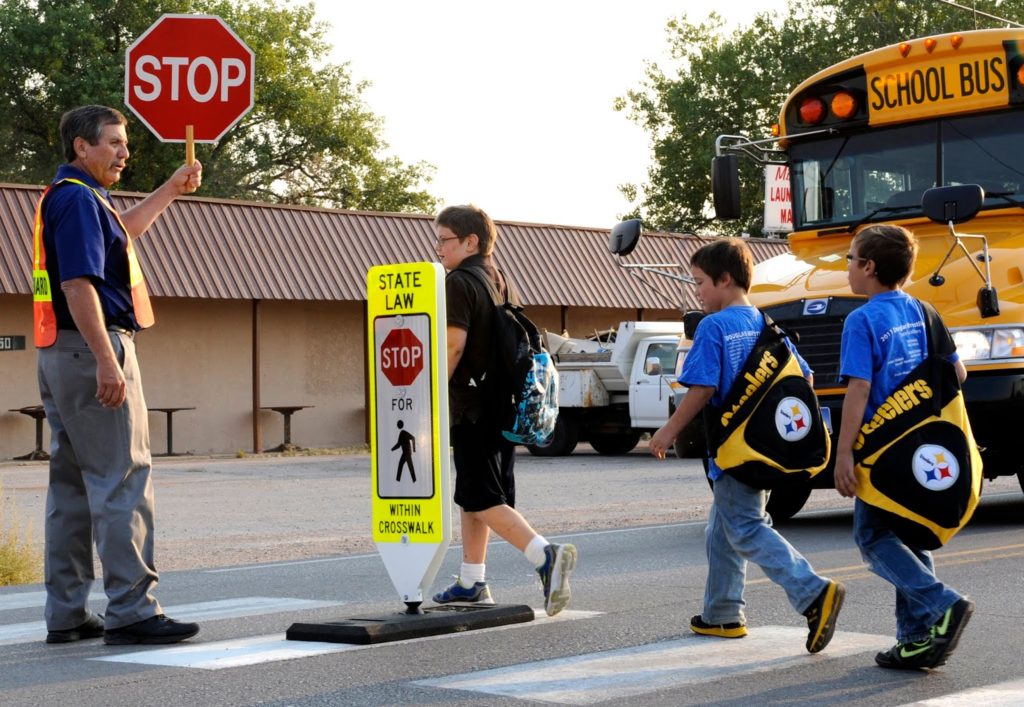Keep students safe with these Red Cross back to school tips
Now is a good time to devise family preparedness plan

School bells will be calling students back to the classroom soon and the American Red Cross Cascades Region, has steps everyone can take to help kids remain safe as they head back to school.
As parents get ready for the start of a new school year, it’s a good time to think about emergencies, such as weather-related disasters, and draw up an emergency plan for their household. Know what the emergency plan is at your child’s school and develop a family emergency plan so everyone will know who to contact and where to go if something happens during the school day. Details are available at redcross.org/prepare.
“There are a lot of things to think about for the start of a busy new school year, but don’t forget to include safety,” said Rebecca Marshall, Regional Disaster Officer. “We ask parents and guardians to consider familiarizing their children with these measures to help keep them safe as they head back to school.”
CELL PHONES A DISTRACTION
The National Safety Council (NSC) reports distracted walking can be dangerous, even deadly. Teach your students the following:
- Don’t text or talk on your phone while walking. If you must text, move out of the way of others and stop on the sidewalk.
- Never cross the street while using an electronic device.
- Do not walk with headphones in your ears.
- Drivers can be distracted too. Never use a phone while driving. Help keep children safe by eliminating all distractions.
TAKING THE BUS
- Students should get to their bus stop early and stand away from the curb while waiting for the bus to arrive. Young children should be supervised.
- Board the bus only after it has come to a complete stop and the driver or attendant instructs them to get on. They should only board their bus, never an alternate one.
- All students should stay in clear view of the bus driver and never walk behind the bus.
WALKING TO SCHOOL
- Cross the street at the corner, obeying traffic signals and staying in the crosswalk.
- Never run out into the street or cross between parked cars.
- Use a route along which the school has placed crossing guards.
- Parents, walk with young children and those taking new routes or attending new schools, for the first week to ensure they know how to get there safely. Arrange for the kids to walk to school with a friend or classmate.
GOING BY CAR
- Everyone should always wear a seat belt.
- Younger children should use car seats or booster seats until the lap-shoulder belt fits properly (typically for children ages 8-12 and over 4’9”), and ride in the back seat until they are at least 13 years old.
- If a teenager is going to drive to school, parents should mandate that they use seat belts.
RIDING A BIKE There may be more young people on bikes as the school bells ring. They should:
- Wear a properly fitted helmet and bright clothing.
- Ride on the right side of the road, with traffic, in a single file.
- Come to a complete stop before crossing the street; walk bikes across the street.
- Stay alert and avoid distracted riding.
SLOW DOWN Drivers should slow down, especially in residential areas and school zones, and know what the yellow and red bus signals mean. Yellow flashing lights indicate the bus is getting ready to stop, that motorists should slow down and be prepared to stop. Red flashing lights and an extended stop sign indicate the bus is stopped and children are getting on or off.
Motorists must stop when they are behind a bus, meeting the bus or approaching an intersection where a bus is stopped. Motorists following or traveling alongside a school bus must also stop until the red lights have stopped flashing, the stop arm is withdrawn, and all children have reached safety. This includes two and four-lane highways. If physical barriers such as grassy medians, guide rails or concrete median barriers separate oncoming traffic from the bus, motorists in the opposing lanes may proceed without stopping.
KEEP LITTLE ONES SAFE Keeping all students safe is the primary concern for everyone, but there are special steps for parents of younger kids and those going to school for the first time:
- Make sure the child knows their phone number, address, how to get in touch with their parents at work, how to get in touch with another trusted adult and how to call 911.
- Teach children not to talk to strangers or accept rides from someone they don’t know.
Finally, download the free Red Cross First Aid app for instant access to information on handling the most common first aid emergencies. You can find it by searching for ‘American Red Cross’ in your app store or at redcross.org/apps. Learn and practice First Aid and CPR/AED skills by taking a course (redcross.org/takeaclass) so you can help save a life.